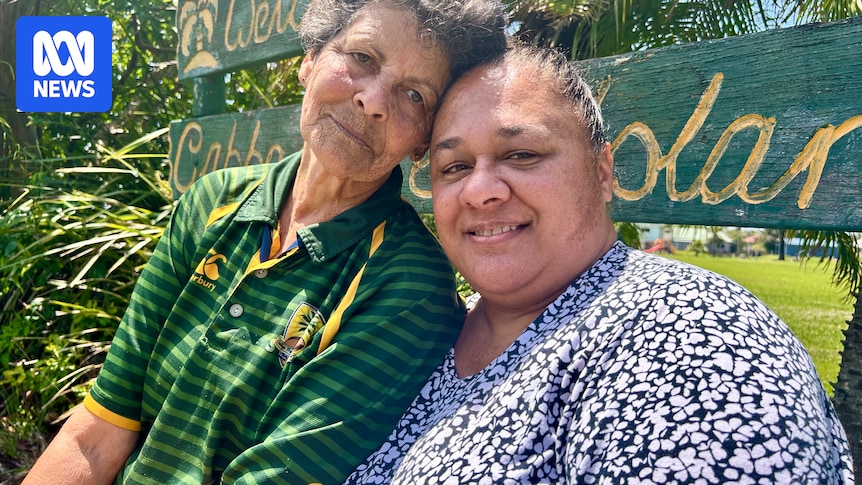An Aboriginal community in northern NSW has voted to rebuild its island home almost three years after it was abandoned due to flooding.
Nineteen houses will be rebuilt on Cabbage Tree Island near Ballina at a cost of $30 million, funded by the New South Wales Reconstruction Authority and the National Emergency Management Agency.
A further $13 million has been allocated to the rebuild of community infrastructure including the Cabbage Tree Island Public School and local health centre.
Housing and community infrastructure on Cabbage Tree Island have been unused for almost three years. (ABC North Coast: Hannah Ross)
Jali Local Aboriginal Land Council said the decision marked a momentous turnaround from 12-months ago when the state government and the land council deemed the island too high risk for habitation.
At the time the NSW Planning and Environment Department wrote to the land council saying the “risks are so high they cannot in good faith financially support a rebuild on the island for residential purposes”.
Loading…
Chairperson Kylie Jacky said the community had worked together since then to revisit the consultation process and ensure everyone’s voices were heard.
“It’s been too long, and our families and community members from Cabbage Tree Island have suffered,” Ms Jacky said.
“We were not listening to the collective voices of our community. I really feel we lost our way in relation to that.
“Government and other agencies need to hear this. If you are only listening to one, two, or five or six voices you are not listening to the collective community.
“You need to listen.”
Jali Local Aboriginal Land Council held events this year to consult with the community about its future. (ABC North Coast: Hannah Ross)
Ms Jacky said residents were keen to move out of a temporary housing village in nearby Wardell as soon as possible and would be working to renovate and retrofit their homes using flood-resilient materials over the next 12 months.
She said phase two of the island’s rebuild would be to apply for development applications to raise the houses above the one-in-100 year flood level.
“We will build back better,” she said.
“We are a community that experiences and knows floods. It’s in our old people’s DNA.
“Moving forward we will be a flood-resilient community and we will work with government and other agencies about what that means.”
Dale Bolt pushing a wheelbarrow in the backyard as part of clean-up effort Cabbage Tree Island. (ABC News: Rani Hayman)
Residents rejoice
Cabbage Tree island resident Delia Rhodes said her joy at returning home was tinged with sadness for the community members who had passed away during the years since flooding decimated the community in February 2022.
“A lot of us are related and to lose a family member who wanted to come home is very hard,” Ms Rhodes said.
“I just want to get back to seeing the kids roam and enjoying the outdoor space as much as they can.”
Resident Maddison James said he could not wait to get his family out of the pod village at Wardell and back onto the island where he grew up.
“Connecting to country, go out fishing with them, do things that we did as kids and build memories,” he said.
Jali Local Aboriginal Land Council is working to get residents back into their homes within the next 12 months (ABC North Coast: Hannah Ross )
Lessons to be learnt
Ballina MP Tamara Smith said it was exciting for residents to now have a clear pathway to go back to the island.
Ms Smith said the process to get to this point was a lesson in the importance of proper consultation with communities in the wake of natural disasters.
“Aboriginal communities are the most well-placed to determine what happens in their community and they are so often not given the opportunity,” she said.
“There’s still a lot of lessons to learn in terms of genuine consultation with community.
“Working with Aboriginal communities in disaster response — there needs to be a different lens.
“There needs to be a real recognition of people’s lived experience, of their insights and wisdom, and to just take the time to properly consult.”
